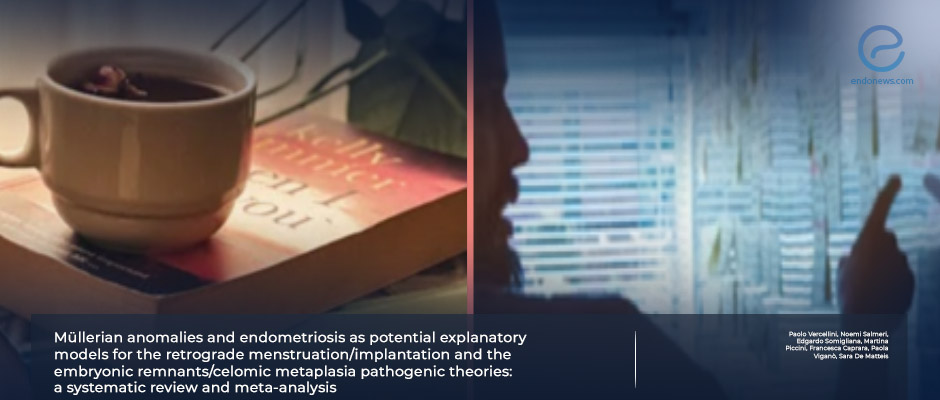Retrograde Menstruation Theory Through Müllerian Anomalies
Jul 12, 2024
The prevalence of endometriosis is higher among women with obstructive Mullerian anomaly.
Key Points
Importance:
- If the natural obstructive Müllerian anomaly model is biologically valid, the spontaneous resolution of endometriotic lesions after outflow obstruction correction should change the "secondary" endometriosis theory.
Highlights:
- Endometriosis prevalence is higher in women with obstructive Müllerian anomaly, so the causal relation between them is indisputable. But some questions still remain unanswered.
What's done here:
- Dr.Vercellini et al., from Milan, Italy, searched the literature for the question about the effect of obstructive and nonobstructive Mullerian anomalies on endometriosis prevalence.
- English literature from electronic databases of PubMed and Embase between 1980 and December 2023 served to find an answer to their question.
Key Results:
- Only seven retrospective studies were eligible and inspected for the prevalence of endometriosis in patients related to Müllerian anomalies.
- The overall mean estimate of endometriosis prevalence in patients with obstructive and nonobstructive Müllarien anomalies was 49% and 19% retrospectively.
- This finding supports an association between retrograde menstrual flow and the risk of endometriosis development.
- The overall mean estimate of endometriosis prevalence in patients with and without Müllerian anomalies was 23% and 21% retrospectively.
- This second finding does not support an association between embryonic cell rests /coelomic metaplasia theory.
Lay Summary
The pathogenesis of endometriosis is still under debate. Sampson also described this condition as "developmentally misplaced endometrial tissue" in 1925.
To evaluate the theories of pathogenesis, Vercellini et al. from the Academic Center for Research on Adenomyosis and Endometriosis at the Department of Clinical Sciences of the University of Education, Milan, Italy, set up a literature exploration.
To investigate the retrograde menstrual flow theory, the authors selected studies that compare the prevalence of endometriosis in obstructive and non-obstructive Müllarian anomalies. Patients with obstructive Müllarian disease form a pathologically increased menstrual reflux group; allowing comparison with the nonobstructive Müllarian anomaly group that would reveal the retrograde menstrual flow theory.
A systematic review was used, only seven comparative articles matched their criteria and were selected. Complete Müllerian agenesis (Mayer-Rokitansky-Küster-Hauser syndrome) and imperforate hymen cases were excluded. After statistically analyzing the data, the authors interpreted the prevalence of endometriosis as having an over fourfold higher association risk with obstructive Müllerian anomalies. This result appears to support the retrograde menstrual flow theory. Dr. Vercellini and colleagues widely discussed the literature, such as the level of Mülarian obstruction, histologic confirmation of endometriosis, and the time intervals between symptom onset and surgeries.
Another comparison was about the prevalence of endometriosis between women who had non-obstructive Müllerian anomalies and those without Müllerian anomalies. The comparison results did not support ectopic coelomic epithelium theory as no significant difference was observed. While examining this issue, they drew attention to the studies that did not exclude anovulation and tubal factors causing a reduction in the potential real prevalence of endometriosis.
After pointing out some weaknesses of those seven studies, the authors concluded the relevance of retrograde menstrual flow theory. In their opinion, one cannot rule out alternative hypotheses. This well-wrıtten study was recently published in Human Reproduction.
Research Source: https://pubmed.ncbi.nlm.nih.gov/38733102/
celomic metaplasia müllerian anomaly embryonic remnants pathogenesis retrograde menstruation infertility endometriosis.

